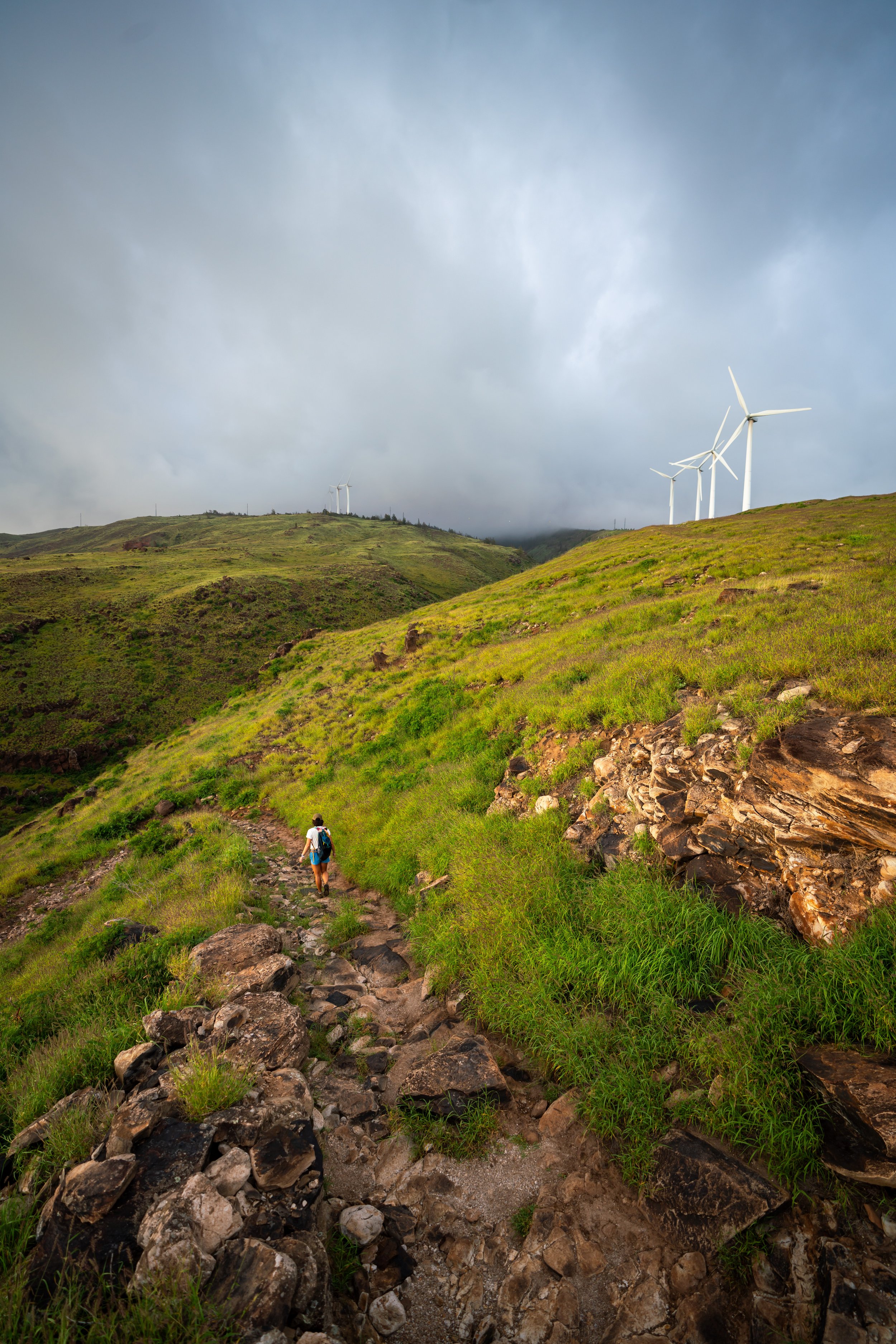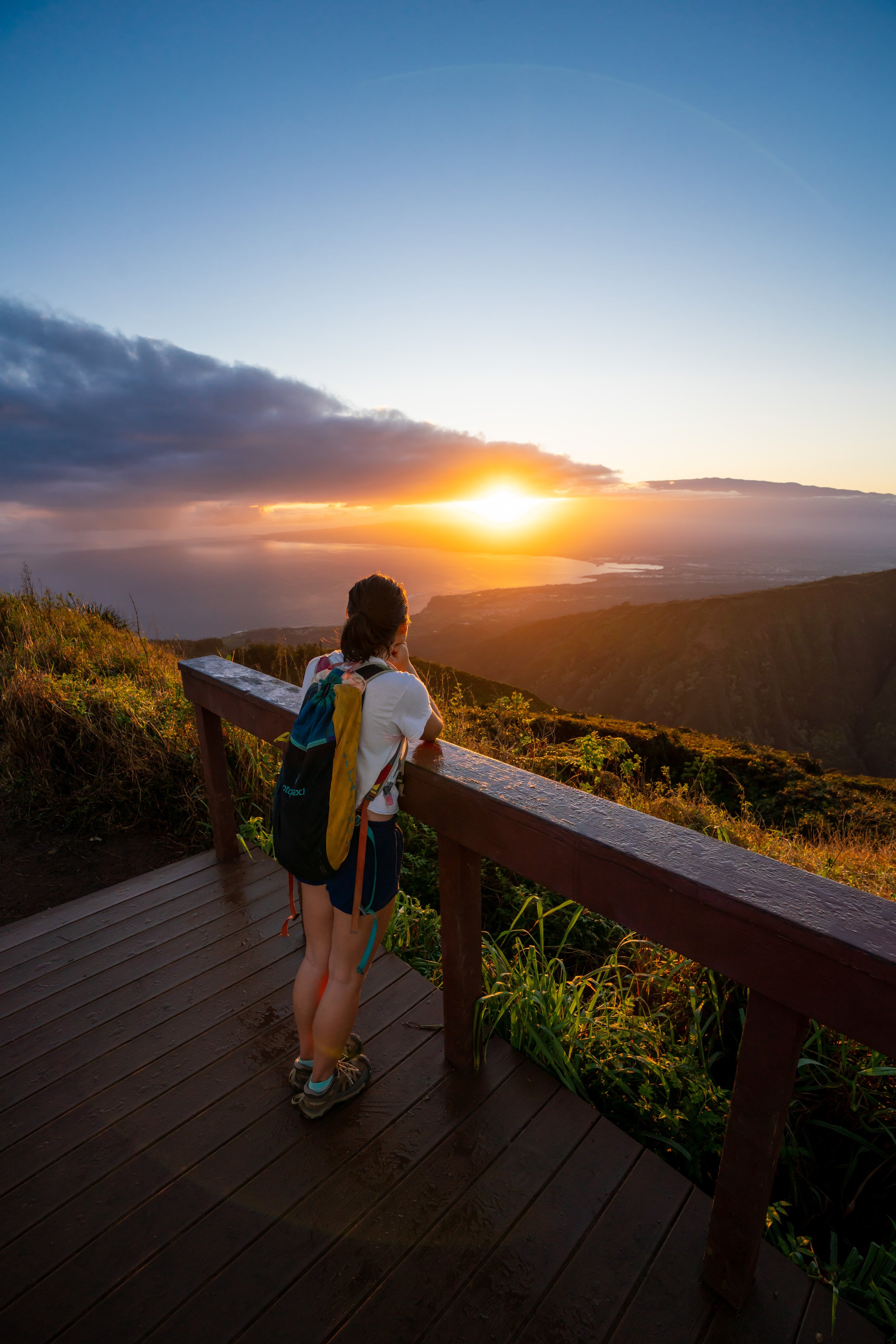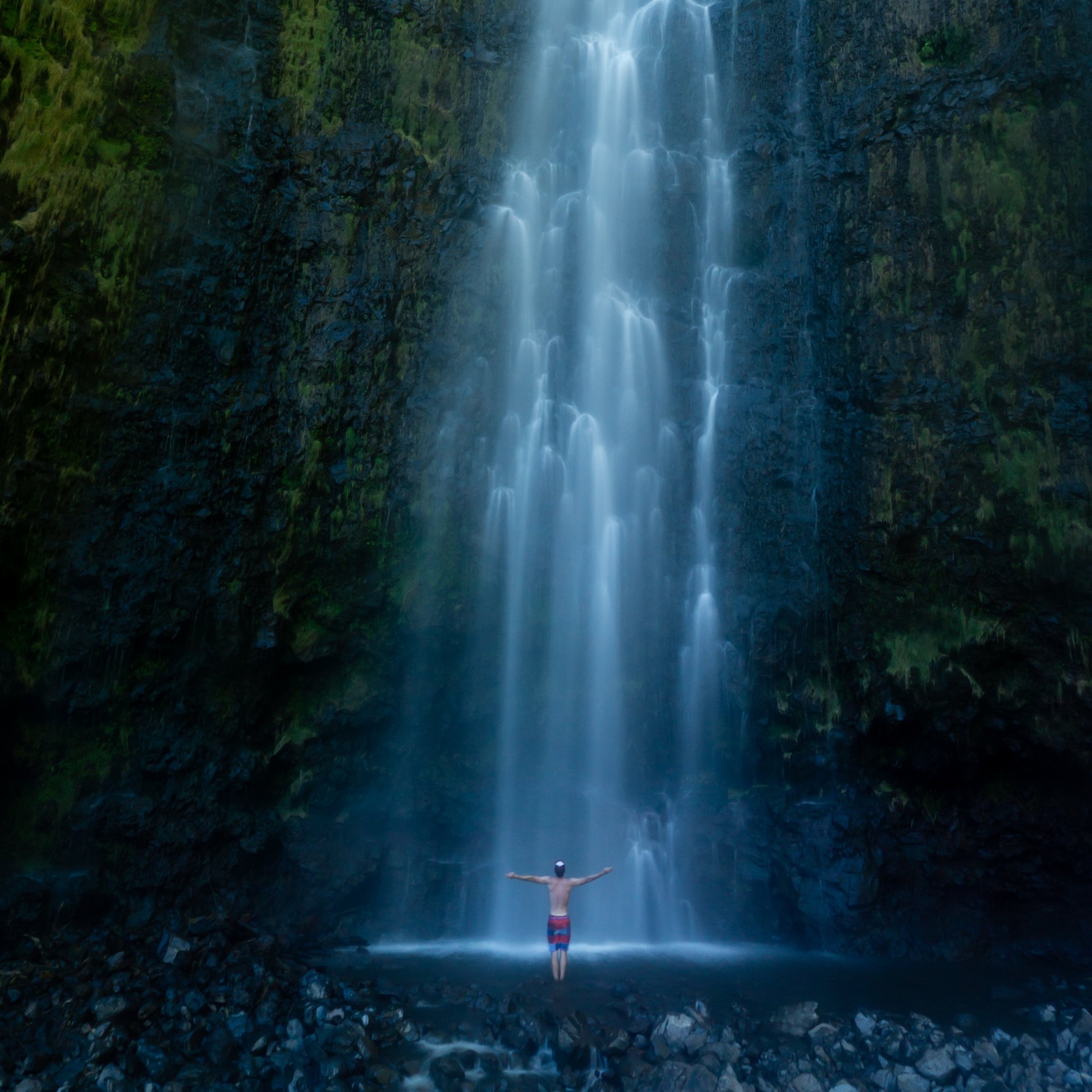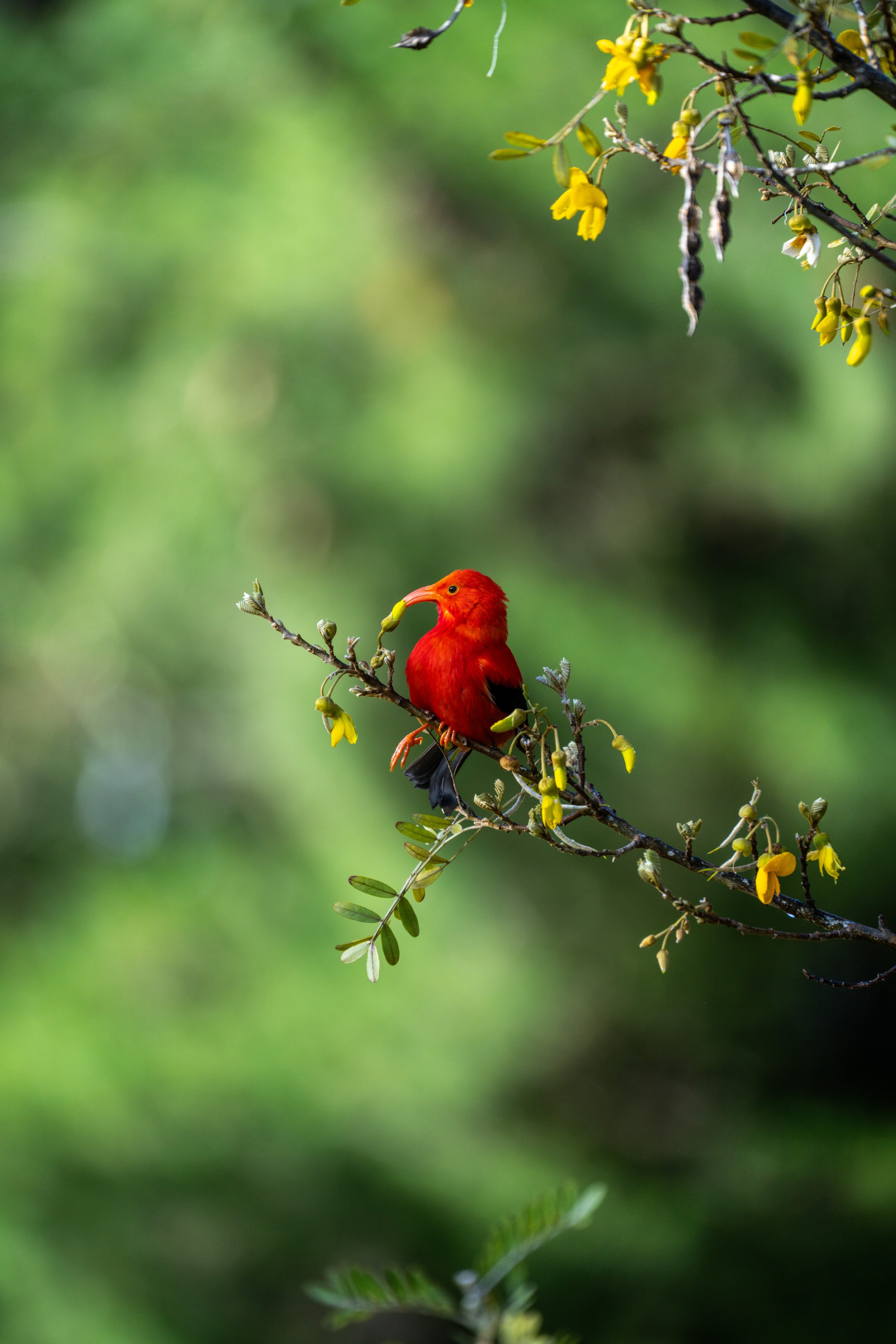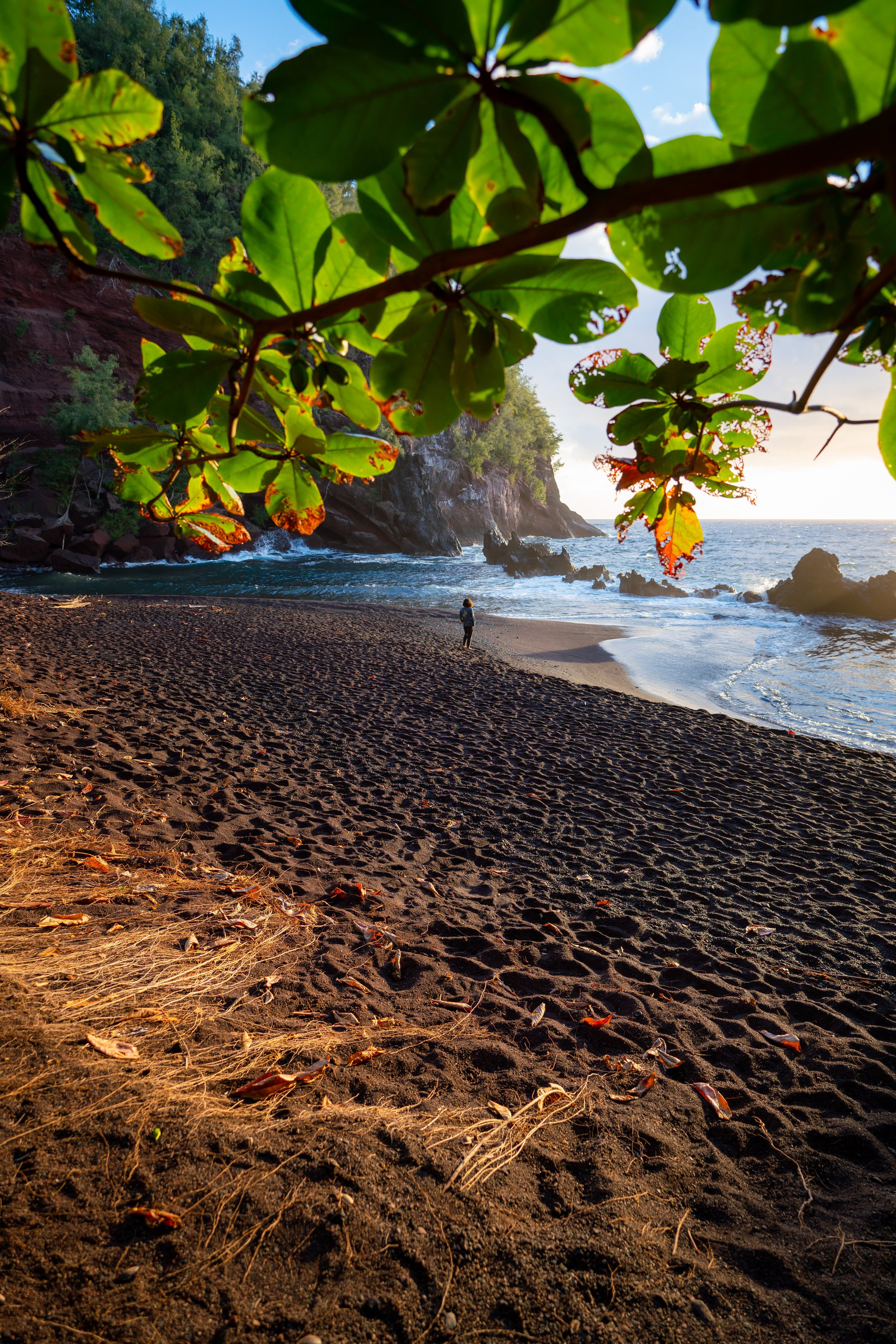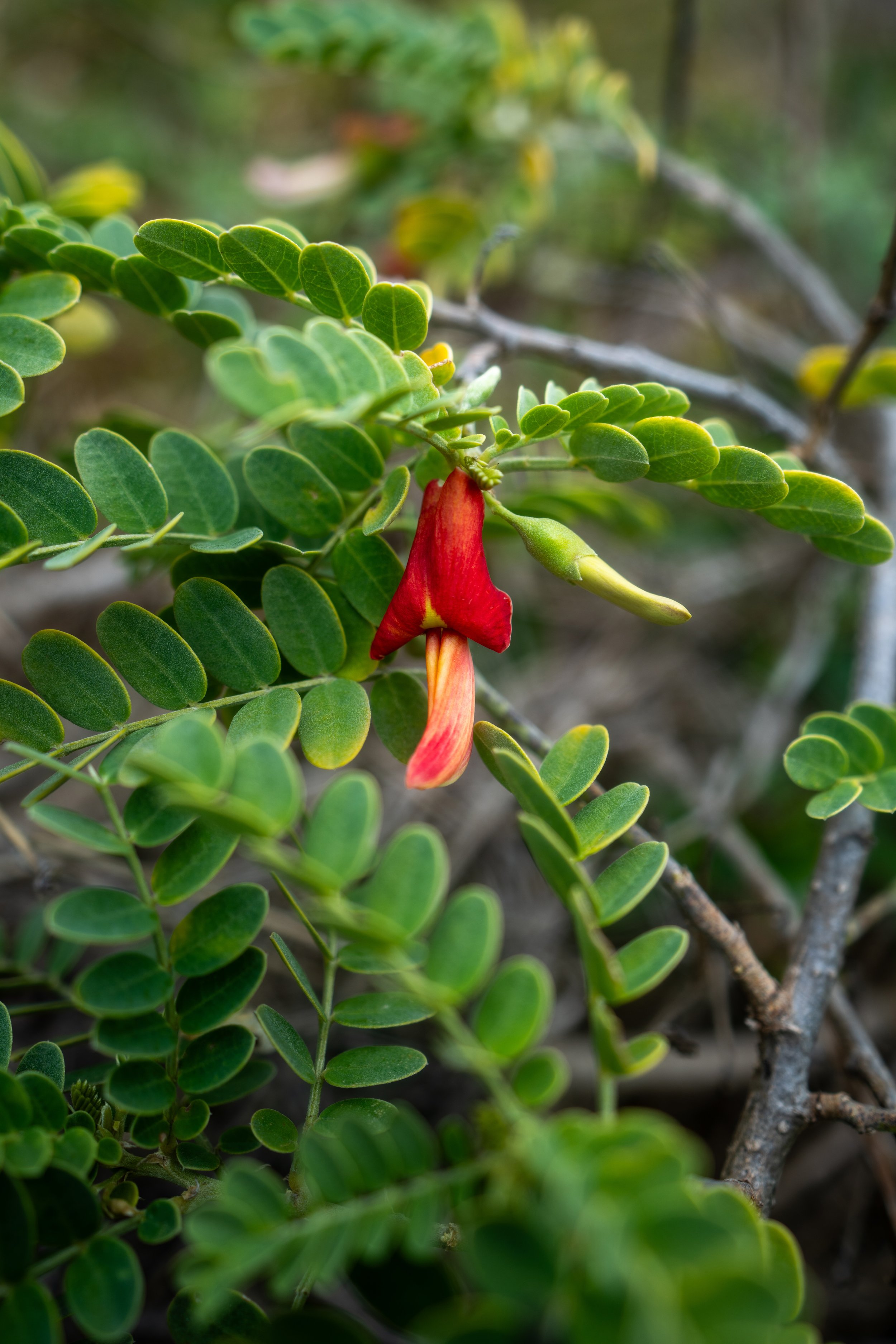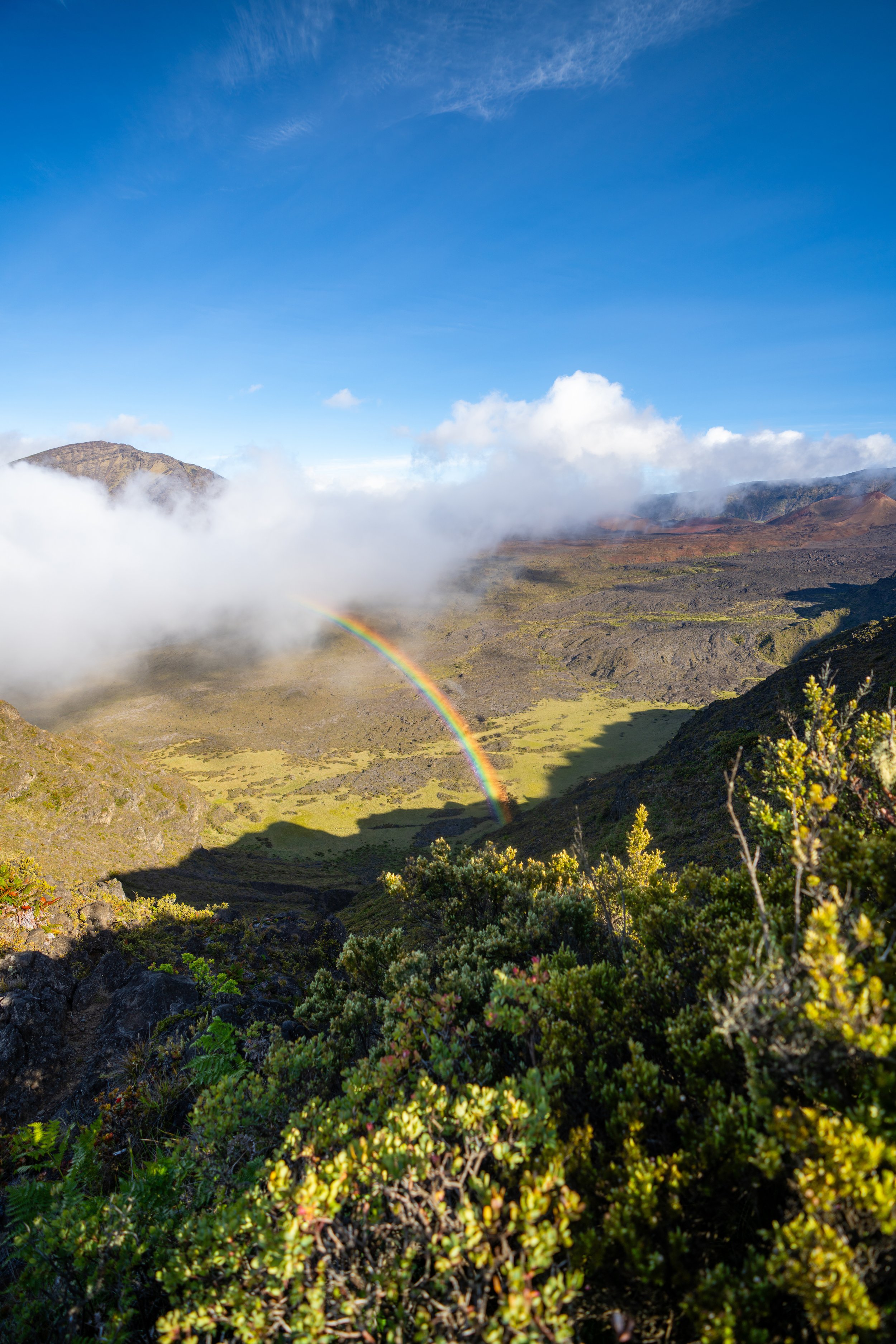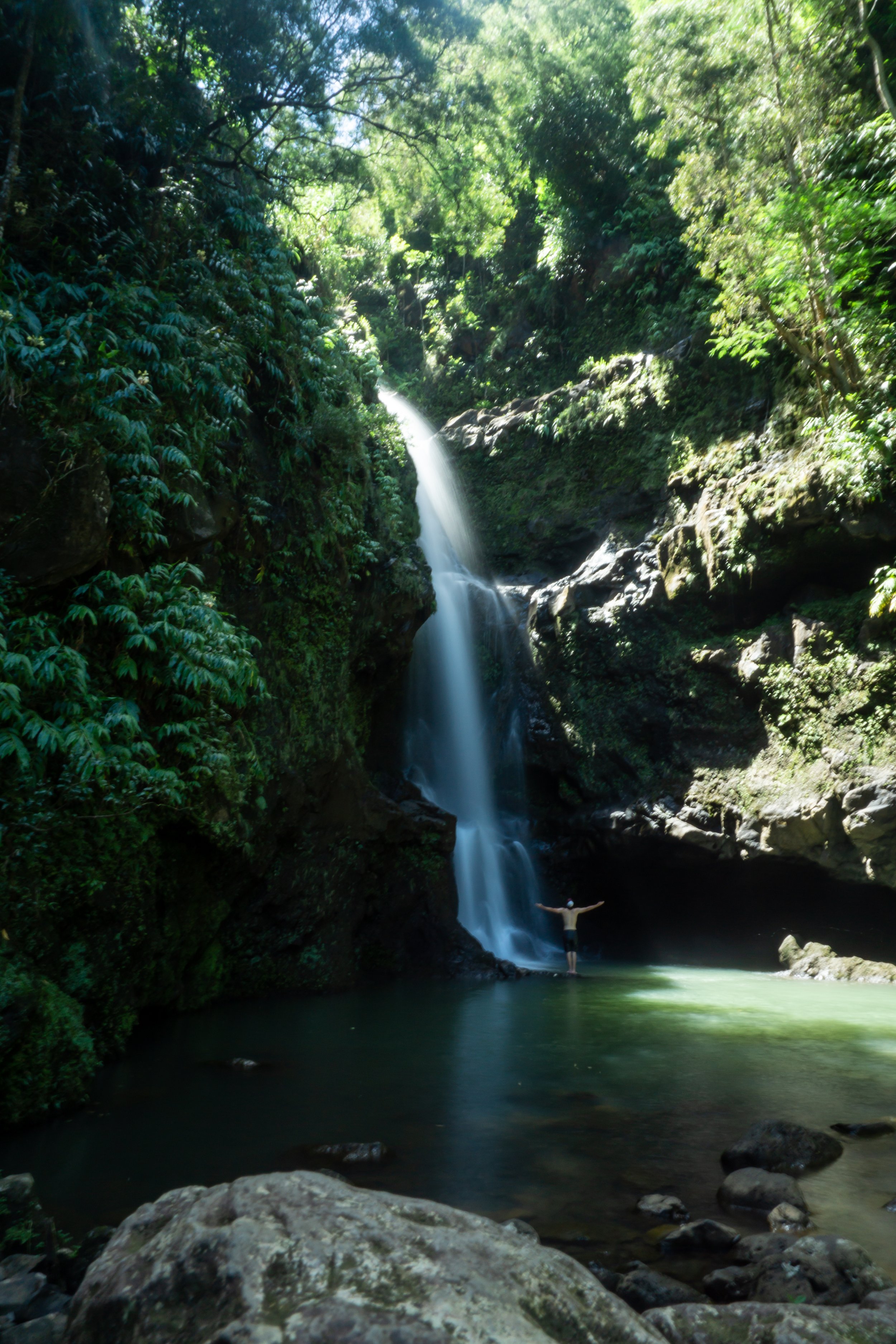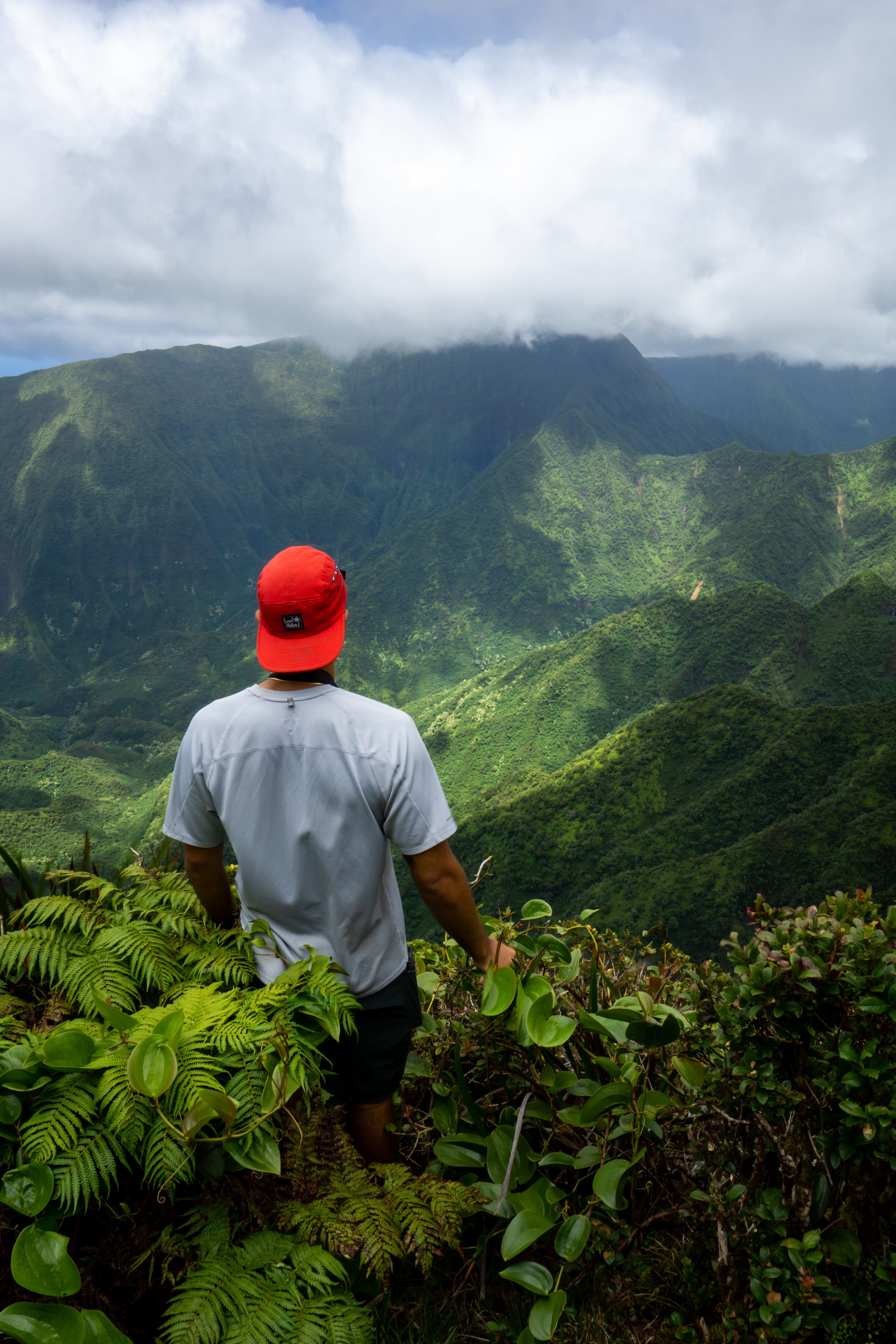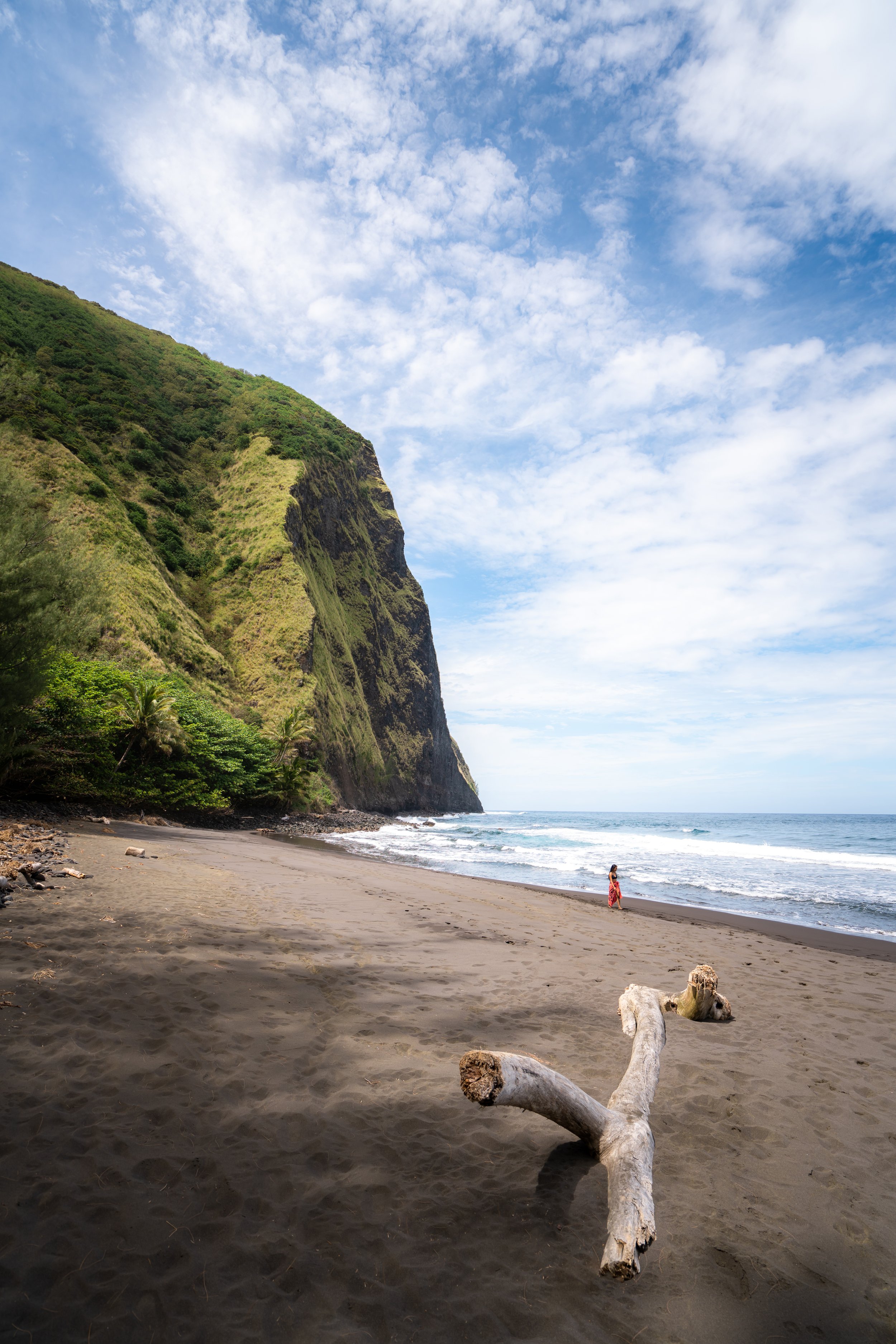Hiking the Waikamoi Ridge Trail on Maui, Hawaiʻi
Distance: 1.0 miles / 1.6 km
The Waikamoi Ridge Trail, also called the Waikamoi Loop Trail, is one of the easiest day hikes off the famous Road to Hāna, and best of all, it’s free!
I emphasize this because many things to do off the Hāna Highway, including Twin Falls, the Garden of Eden, a number of tours, and Hawaiʻi State Parks for out-of-state residents, are not free.
All that being said, I feel that it’s important to highlight the adventures that people can enjoy without having to spend money, and the Waikamoi Ridge Trail is truly just that, as the easy 1.0-mile (1.6 km) loop is a great place to get out of the car and enjoy a short, easy day hike before continuing further down the Road to Hāna.
Waikamoi Ridge Trailhead Parking
Parking for the Waikamoi Ridge Trail is located directly off the right-hand side of the Hāna Highway when driving east out of Kahului.
The Waikamoi parking area is small, meaning that it’s not uncommon for all the spots to be taken—especially during the mid-morning hours when the trail is at its busiest.
In any case, consider the Waikamoi Ridge Trailhead, or any trailhead off the Hāna Highway, to be a high-crime area for petty theft, meaning you should never leave visible bags or anything valuable in your car.
Google Maps Directions: Waikamoi Ridge Trailhead
My Hawaiʻi Hiking Checklist
Osprey 3L Water Bladder - The Osprey 3L water bladder is the most universal hiking and backpacking water bladder on the market, and it’s my go-to because of the slide-off seal that allows it to be quickly filled from the top. Additionally, individual parts are easily replaceable, such as the bite valve.
Blister / Heel Protectors - I swear by these cheap, amazing heel protectors to prevent blisters for nearly every kind of hiking and backpacking that I do!
Black Diamond Headlamp - Personally, I recommend the Black Diamond Storm because it is one of the brightest, lightest, and longest-lasting headlamps on the market—and trust me, the weight-to-battery-life ratio really does matter!
Hiking / Trail Running Shoes - Depending on the type of trail, I prefer to use either the Keen Targhee for longer, more rugged hiking or the HOKA Zinal Trail-Running Shoe for lighter, less intense trails. In either case, both have been amazing to me for many years across countless environments, and both can be found in men’s and women’s sizes. - (Men’s Keen / Women’s Keen) (Men’s HOKA / Women’s HOKA)
Waterproof Rain Shell - You never know when it may rain, and I’ve learned over the years that a rain shell is far better than a rain jacket. By this, I mean that it’s best to have something that the water will roll right off of, which is why I recommend the Patagonia Torrentshell 3L available in both men’s and women’s sizes.
High SPF Sunscreen - Packing high-SPF sunscreen is a must for long days outside!
Hiking the Waikamoi Ridge Trail
Regardless of whether you decide to hike the loop only or continue further up the ridge, the Waikamoi Ridge Trail is almost an entirely uphill trail.
With that in mind, the incline isn’t overly strenuous, but the trail can be muddy and slippery, even if the area hasn’t seen rain in a few days.
Waikamoi Loop Trail
Immediately after the picnic shelter, the Waikamoi Ridge Trail splits into a lower loop before it continues further up the ridge, where both sides come together further up the trail.
That being said, I chose to go right, but it truly makes no difference in terms of difficulty which direction you choose to hike.
Along the Waikamoi Ridge Trail, there are a number of different placards indicating the various species that can be found along the hike.
However, in my experience, many are inaccurate, and unless your Hawaiian plant ID is exceptionally good, you may be deceived into thinking that what it’s pointing to is the correct species when, in fact, it’s a plant that is much more difficult to pick out amongst all the weeds.
This Kukui placard is a great example of what I was talking about above because the plants surrounding the placard located on the ground are all non-native/ invasive Golden Pothos and Shoebutton, not Kukui.
However, the Polynesian introduction that it’s referring to is actually the highest overstory tree in the center of the photo below.
This is why I think these placards can be very deceptive, unless you know what to look for.
Waikamoi Loop-Waikamoi Ridge Junction
After 0.2 miles (0.3 km), both sides of the Waikamoi Loop Trail come together, with the other half being roughly the same distance.
That being said, go right to continue further up Waikamoi Ridge, or go straight (left) to return to the trailhead.
Waikamoi Ridge Trail
I chose to continue further up the ridge, which is only another 0.3 miles (0.5 km) to reach the upper picnic shelter.
This endemic Hāpuʻu fern is another great example of how hard these placards can be to trust, as the native fern is inundated by invasive species on all sides.
This also likely means that native plants, like this Hāpuʻu fern, will be harder and harder to find on Waikamoi Ridge, unless aggressive management efforts are implemented.
This section of the Waikamoi Ridge Trail through the bamboo can be particularly muddy.
After the bamboo section, the Waikamoi Ridge Trail makes a hard right turn to continue further, with the upper picnic shelter located a short distance away.
Waikamoi Upper Picnic Area
The top of the Waikamoi Ridge Trail is this open clearing and picnic area.
However, most will notice that the path continues further, but it is not maintained past this picnic shelter.
That being said, I highly recommend turning back if you are unfamiliar with what’s ahead, as the trail that continues further only gets more difficult and more confusing than anything up to this point.
Waikamoi Loop-Waikamoi Ridge Junction
Once back at the Waikamoi Loop Trail, I went right to continue down the east side of the loop back to the trailhead.
Waikamoi Loop Trail
The east side of the Waikamoi Loop Trail descends a steep trail at first, but it quickly levels off where the loop meets the bench shown below.
This is the bench that I was referring to above.
Waikamoi Loop Junction
Overall, the Waikamoi Ridge Trail isn’t one for the views, but it is a nice trail to get out and go for a nice day hike off the Hāna Highway.
I say this because only a small number of trails off the Road to Hāna are easily accessible, as the vast majority are little hidden secrets that can be a challenge for most to even notice!
Native Plants on the Waikamoi Ridge Trail
As previously mentioned, the vast majority of plants along the Waikamoi Ridge Trail are non-native/ invasive species. This is why picking out the few native plants that the placards allude to can be a challenge.
However, if you feel good about your Hawaiian plant ID, hikers can expect to see Hāpuʻu, Palaʻā, Kōpiko, ʻŌhiʻa lehua, Hala, and Hau, to truly only name a few.
If you would like to learn more about these and many other native Hawaiian plants from across the islands, I encourage you to check out my separate post linked below.
Read My Separate Post: Native Hawaiian Plant Guide
More Maui Adventures
If you’re interested in reading about some more amazing Maui adventures, check out my separate posts below!
Best Hotels & Vacation Rentals on Maui
Since Maui is such a big island and driving from place to place can take a long time, many of the best places to stay are located on all different sides of the island.
I recommend starting your search on VRBO to compare places from Kīhei, Kahului, Lāhainā, Kāʻanapali, and Hāna.
Maui Airport-Hotel Shuttle
Prices on ride-share apps like Uber/ Lyft cannot beat the price of booking your hotel or vacation rental shuttle prior to arrival.
That being said, the shuttle options below are incredibly cheap, and they are a great option to get across North, South, West, and Upcountry Maui!
Best Way to Book Rental Cars!
I travel quite a bit, and I know firsthand that finding a good rental car deal can be a challenge, but that’s why I recommend comparing all of your options with Discover Cars.
In short, Discover Cars is a well-known, reputable business that allows you to search for the best deal across companies, and they have the best full-refund cancellation policy I’ve ever seen, valid up to 72, or sometimes even 48, hours prior to your reservation!
Book Here: Discover Cars
Visiting Other Islands
If you are visiting Maui or heading to another island, check out some of my personal recommendations for Oʻahu, Maui, Kauaʻi, Molokai, Lānaʻi, and Hawaiʻi Island (Big Island) in these separate posts.
If you’re trying to decide which island is right for your visit, check out my overview about each island in the post below.
Read My Separate Post: What is the Best Hawaiian Island to Visit?
What is the Best Time of Year to Visit Hawaiʻi?
The weather in Hawaiʻi can often appear to be warm and beautiful throughout the year, but in my experience, there is a lot more to consider when planning what time of year to visit the islands, such as what island you are considering, what sides of each island do you plan to stay, what activities are you most interested in, the wildlife, and countless other nuanced variables that can all impact the type of trip you can expect to have.
For these reasons, I highly recommend reading through my separate article to not only understand my thoughts regarding the best time of year to come to Hawaiʻi but also what you need to consider based on the time of year that you plan to visit.
Read My Separate Post: What is the Best Time of Year to Visit Hawaiʻi?
Safety
All hikes in Hawaiʻi should not be compared to trails outside of the islands, and hikers should exercise due caution on every adventure, given that many are extremely dangerous.
By this, I mean that Hawaiʻi is known for hot, humid weather, steep, dramatic, and unstable cliffs, and flash floods, which can occur without warning. Therefore, it is important that you check the local forecast, understand the physical condition of your entire group, and pack sufficient food and water before attempting any adventure.
Disclaimer
All information provided on this blog is for informational purposes only and is not intended to be a substitute for information or advice from qualified professionals or managing agencies.
Noah Lang Photography LLC makes no representations or warranties regarding the accuracy or completeness of the information provided here, and readers should use their own discretion, judgement, and seek professional advice where it is appropriate.
Furthermore, Noah Lang Photography LLC shall not be held responsible for any injuries, lost individuals, or legal issues arising from the use of information provided on this website, and if applicable, the above safety disclaimer should be referenced to provide a generic overview of the risks involved.
All said, the content on this blog is for the sole use of Noah Lang Photography LLC, and unauthorized use or reproduction of this content is strictly prohibited.
Disclosure
This post is not sponsored.
However, some of the links in this post are affiliate links, which means that I may earn a small commission if a purchase is made through one of those links. This commission comes at no additional cost to you, and I only recommend products that I personally use and believe will add value to my readers. Thank you for your support, which enables me to continue creating more!
To read the full privacy policy, click here.
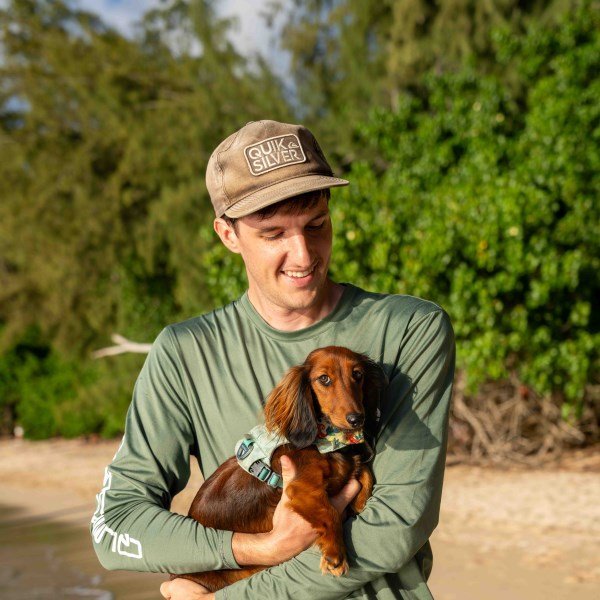
About This Blog
Noah Lang Photography, also known as @noahawaii, is 100% reader-supported!
I do not accept guest articles or sponsored content of any kind on my blog, which is why, if you enjoy the outdoor and travel content I create, please consider buying me a coffee!
I appreciate your support, which helps me continue to keep this blog alive!










